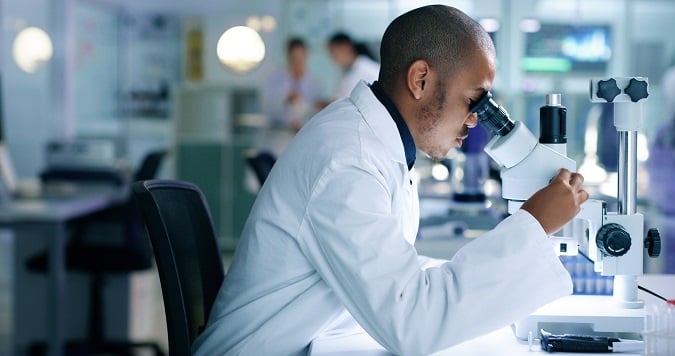To promote local growth within the life sciences sector, a number of factors are commonly required: a strong talent pipeline including local college graduates with S.T.E.M. degrees, a variety of capital funding opportunities, and an abundance of purpose-built lab space.5
Boston and San Francisco are flourishing as biotech hubs, primarily because of their synergy nearby academic and research institutions and organizations.1 These affiliations provide access to financial resources and a pool of highly educated workers.5 Of equal importance, these two markets also offer plenty of incubator space for startups, as well as lab space for growing and established companies.5
Dallas-Fort Worth – with its central location, a strong pool of educated labor, and cheaper rent than coastal hubs – is emerging as a life sciences hub.1
Markets like Dallas “have the talent and ideas, but lag in physical infrastructure and funding, indicating markets ripe for growth if given thoughtful development,” according to global real estate services firm JLL.5
Growing life sciences ecosystem
Since 2010, more than 220 life sciences companies have relocated or expanded in the Metroplex, according to the Dallas Regional Chamber, which recently began a campaign to attract more life science companies. The organization expects that number will continue to grow steadily.4
DFW attracted $1.6 billion of life sciences venture capital funding between 2018 and 2022 – the eighth largest amount of any U.S. market. This includes $406 million in NIH funding.1
The Metroplex’s total life sciences labor pool has grown by 17% since 2019 to more than 26,000 workers, surpassing the national average growth of 13.7%.1 In the R&D sector, Dallas/Fort Worth ranked third nationally with a 44.5% growth rate over the same period.1
Generally, successful research clusters offer facilities for STEM education, career development, and incubator labs, functioning as centers for collaboration, innovation and scientific discourse.5
The Metroplex’s growing life sciences ecosystem is supported by several universities and research institutions including:5
- University of Texas Southwestern Medical District – Dallas
- University of Texas at Dallas
- University of North Texas Health Sciences Center – Fort Worth
- Texas Christian University (TCU) School of Medicine – Fort Worth
- Southside Medical District – Fort Worth
- Texas A&M University/Baylor Scott & White medical campus – Dallas
- UTSW/Texas Health Resources Medical Research Campus – Frisco
Combined, these educational institutions and organizations helped produce the nation’s 10th largest number of biological and biomedical sciences graduates in 2022.1 For example, about 75% of University of Texas at Dallas’s 32,000 students8 pursue and graduate with S.T.E.M. degrees.5
Additionally, Dallas College – in partnership with Collin College, Tarrant County College and University of Texas at Arlington – received a groundbreaking $8.8 million grant from the U.S. Economic Development Administration to fund and create a regional career pathway model in biotechnology.6
Seven North Texas healthcare and life science businesses including UT Southwestern, McKesson, Evolve Biologics, and Texas Health Resources have already signed up to hire a combined 1,100 biotech workers from the program for positions like clinical lab techs and pharmaceutical manufacturing operators, according to Dallas Innovates.6
Life sciences campuses under development
Local experts contend that more life sciences space will likely be necessary to nurture the life sciences growth in DFW.7 In particular, the Metroplex needs speculative lab facilities – spaces that are 70% to 80% finished and can be quickly adapted to specific tenant needs.3
Historically, life sciences startups have had to leave DFW for coastal nodes to meet their growing lab space needs after they’ve outgrown coworking spaces.1 The Metroplex’s lab inventory is around 4 million sq.ft., a fraction of Boston’s 43 million sq.ft. and San Francisco’s 26 million sq.ft.5
Three large real estate projects are underway or proposed to accommodate the life sciences sector’s local growth:
- Campus at Legacy in Plano – NexPoint Real Estate’s proposed $3 billion renovation and expansion of the 100-plus acre campus that once served as headquarters of H. Ross Perot’s Electronic Data Systems. NexPoint plans to expand the campus to 200 acres with over 4 million sq. ft. of lab, office, and therapeutic production space across four phases of construction.10
- Cypress Waters – a 1,000-acre master planned community near Dallas/Fort Worth International Airport situated around a 300-acre lake with office, multifamily, and retail space. Verily, Google’s life science subsidiary, opened its first Texas office in Cypress Waters in 2022.11
- Pegasus Park – a 26-acre former oil industry campus in Dallas that is already in the midst of being reimagined into a life sciences and biotech hub. Located near the UT Southwestern Medical District, Pegasus Park is one of the city’s first biotech and life sciences campus.2 A joint venture partnership of J. Small Investments, Montgomery Street Partners, and an affiliate of Lyda Hill Philanthropies. plans to develop 135k sq.ft. of non-incubator lab/R&D space called Bridge Labs at Pegasus Park.2 The Dallas City Council awarded nearly $8 million in incentives for the $110 million Bridge Labs project.9 BioLabs, a premier coworking incubator space for life science startups, selected Pegasus Park for its first non-coastal/gateway expansion market. Its new space, situated next to Bridge Labs, is already 100% leased.2
In addition to more general risks such as high vacancy rates, oversupply of product in the market, and credit quality of tenants, some of the factors that can impact the success or failure of life sciences investments include proximity to research universities and access to top talent, the amount of VC funding or government investment in the region, and the number of biotech/medical device/pharmaceutical and other life sciences companies in the area.
1 https://www.cbre.com/insights/books/2023-us-life-sciences-outlook
3https://dallasinnovates.com/collaboration-is-the-key-to-north-texas-emergence-as-a-bio-hub/
5https://www.us.jll.com/en/trends-and-insights/research/life-sciences-real-estate-outlook
8https://www.utdallas.edu/about-us/fast-facts/
9https://localprofile.com/2022/08/05/north-texas-hopes-be-biotech-hub-thanks-8-million-grant/
Disclaimer: Market volatility or lack of liquidity could impair an investment’s profitability or result in losses. Factors such as high vacancy, oversupply of the product in the market, increase in interest rates for borrowing loans, bad credit quality of tenants occupying the property, general economic risks such as interest rates, availability of credit, inflation rates, economic uncertainty, changes in laws and general overall deterioration of the market in which the asset sits, all of which could lead to financial difficulties and impact net operating income and can depreciate the value of the property. These factors, in addition to others including increases in the costs in excess of the budgeted costs, the burdens of ownership of real property, environmental liabilities, contingent liabilities on disposition of assets acts of God, pandemics and other national, regional or local emergency conditions, terrorist attacks, and war may affect the level and volatility of asset prices and the liquidity of investment assets.
This article was written by an employee(s) of CrowdStreet and the contents of this publication are for informational purposes only. Neither this publication nor the financial professionals who authored it are rendering financial, legal, tax or other professional advice or opinions on specific facts or matters, nor does the distribution of this publication to any person constitute an offer, recommendation, or solicitation to buy or sell any security or investment product issued by CrowdStreet or otherwise. The views and statements expressed are based upon the opinions of CrowdStreet. All information is from sources believed to be reliable. This article is not intended to be relied upon as advice to investors or potential investors and does not take into account the investment objectives, financial situation or needs of any investor. All investing involves risk, including the possible loss of money you invest, and past performance does not guarantee future performance or success. All investors should consider such factors in consultation with a professional advisor of their choosing when deciding if an investment is appropriate. CrowdStreet assumes no liability in connection with the use of this publication.


